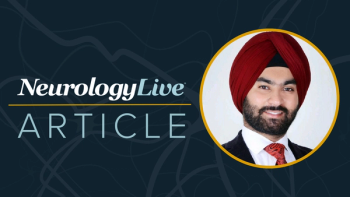
CBD Has Potential for a Variety of Epilepsy Conditions, Expert Says
The medical director of neurology and co-director of the Jane and John Justin Neurosciences Center at Cook Children’s Hospital spoke about what CBD has shown in clinical trials and how it could make an impact outside of Lennox-Gastaut and Dravet syndromes.
M. Scott Perry, MD
Thus far, a number of trials have been conducted with cannabidiol (CBD) in epilepsy conditions such as Lennox Gastaut syndrome (LGS) and Dravet syndrome, the majority of which have shown positive results.
Based on some of these findings, the FDA approved CBD for the treatment of seizures associated with LGS and Dravet for patients 2 years of age and older in June 2018. Manufactured by GW Pharmaceuticals, and marketed as Epidiolex, just 3 months later, it was rescheduled by the Drug Enforcement Administration (DEA) to a Schedule V drug. Interest for the use of the therapy in other epilepsies has since increased.
To find out more, NeurologyLive® spoke with M. Scott Perry, MD, Medical Director of Neurology and Co-Director of the Jane and John Justin Neurosciences Center at Cook Children’s Hospital, who was an investigator in the GWPCARE5 trial, an open-label extension study of the treatment (NCT02224573). He discussed what has been shown thus far in the GWPCARE trials, as well as what he foresees as the next steps for CBD.
NeurologyLive®: What’s next for CBD in epilepsy? Is it being explored in other conditions?
M. Scott Perry, MD: We should have some data in the near future with tuberous sclerosis complex because those are trials GW has completed, we just don’t have the results yet. That’s the next definite thing. You may see some other studies of CBD in some other epilepsies—not with GW, but maybe with other companies looking at cannabidiol for other seizure types. Then, very likely, from GW I’d be surprised if we don’t see other cannabinoids being investigated. Cannabidiol is just one of the hundreds of cannabinoids in the plant, so they’ll likely pursue some others. We know they have pursued some at least in early phase trials and I expect we’ll see that in the future.
As far as conditions, I won’t be surprised if we see it being looked at for a variety of different conditions, just based on what you see now with reports that it may have efficacy for a variety of different things—pain, anxiety, inflammatory conditions, etc. You may see other disease states be investigated in the future.
Overall, what does the GWPCARE5 study add to the literature that clinicians should know?
The study tells us that the drug is effective as a treatment for drop seizures and convulsive seizures—that’s been shown over and over again. The open-label trial tells you that not only is it effective, but its effectiveness is maintained. So, it’s not something that we lose efficacy with over a few months, it’s maintained here for over a year. The drug is very well tolerated and does not have severe treatment-emergent adverse effects emerge over time. They reported on the subject of the caregiver global impression of change, and there you had like over 80% of caregivers reporting significant improvement in their overall life. That scale is really an overall, kind of gestalt of how the patient is doing, and they interpreted that they are doing much better. That’s maintained as well—at 48 weeks, they were still seeing similar impressions of change that were very positive.
Were there any concerns/signs of tolerance?
That analysis was not done as part of what we have right now. The patients in the open-label trial were on a variety of doses. They can go up to 30 mg/kg, if I’m correct in that protocol, but they didn’t all go up there. Many of them were up in the around in the 20 mg/kg range. Basically, what they saw in previous studies was that there wasn’t a real big difference between 10 mg/kg and 20 mg/kg as far as its efficacy, but the adverse effects were much higher as you go the higher dose. This particular study didn’t look at that and can’t really comment on tolerance to a particular dose over time.
It would be interesting to look at—since the efficacy is fairly maintained and actually improves over time—whether or not there was any relationship to changing the patient’s dose over time or whether they actually maintained the same dose the entire time.
Is there anything that’s not well known enough about this therapy based on what we’ve seen thus far?
The word’s out about the drug, obviously. It’s a quite popular drug right out of the gate. I think it will be, like with all drugs, interesting over time to see where it does go with other indications because of the expanded access programs. Multiple other syndromes showed efficacy, it wasn’t all LGS and Dravet syndrome. Some of them had very good efficacy and some of them not as good. Over time, this drug is obviously going to be used for a lot more things outside of these indications, and I think we’ll see, hopefully, really where its place is in treatment for a wide variety of epilepsies. We’ll see if maybe this moves up the ladder to a more primary treatment instead of waiting for intractable epilepsy for it to be used. I know there are certainly many families out there that would love it as their first line drug, but we don’t have the evidence for this to suggest that this is appropriate.
For more coverage of AAN 2019,
Newsletter
Keep your finger on the pulse of neurology—subscribe to NeurologyLive for expert interviews, new data, and breakthrough treatment updates.































